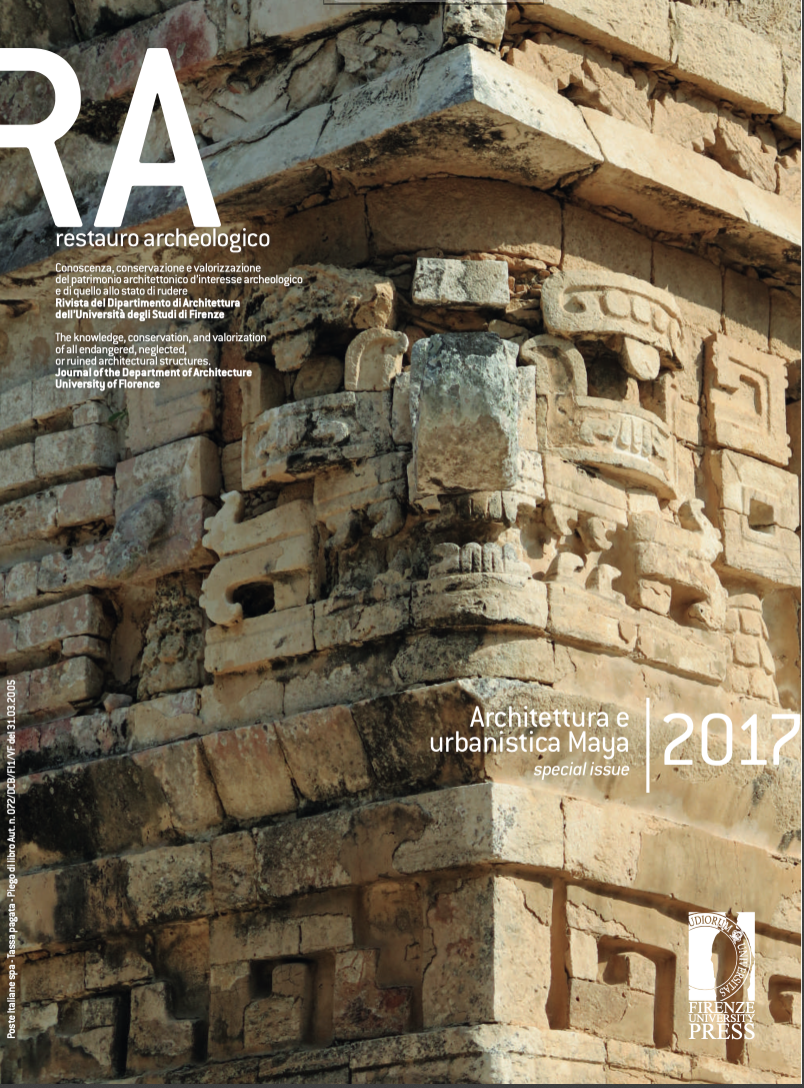Una proposta di lettura integrale della città Maya antica: la morfologia urbana di Chinikihá e Palenque (Chiapas, Messico) nel periodo classico
Published 2017-11-22
Keywords
- Urban Morphology,
- Architecture
How to Cite
Abstract
Research on urban and architectonical contexts in Mesoamerica have generally concentrated on the study and excavation of settlements’ civic-ceremonial core. Nevertheless, in recent years, several projects aim to understand the real extension of Mesoamerican cities and their territorial and political integration. The Palenque Regional Project, directed by Dr. Rodrigo Liendo Stuardo, has concentrated its efforts on the register and documentation of the archaeological sites within the area controlled by the Palenque kingdom in the Classic period. In this regional context, Chinikihá and Palenque are the only settlements that we can define as capitals of a large territory, because of their public architecture as temples, ball games, big central plazas and the hieroglyphic inscriptions, which testify the presence of a ruling dynasty. The urban complexity they manifest, with respect to the other 600 registered sites, confirm their predominant role and their capacity to concentrate people and activities. In this paper, in order to understand the functioning of the city as a response to people´s movement, differential accessibility, buildings hierarchy and association, I propose a methodology to study the ancient Maya urban morphology. This is composed of two topics: a first typological categorization of architectural compounds and groups, and the adoption of the five formal categories proposed by the American urbanist Kevin Lynch which, in my opinion, help outlying the perception that the users could have had of their surrounding built environment. The methodological proposal here formulated is a first approach to understand the urban morphology of ancient Maya cities: I consider that, from an architectonic point of view, it is a fundamental task to complement archaeological investigations with the study of the urban context, in order to better comprehend and propose how space was used and how it would have been to live in a planned city and in a symbolic environment.


